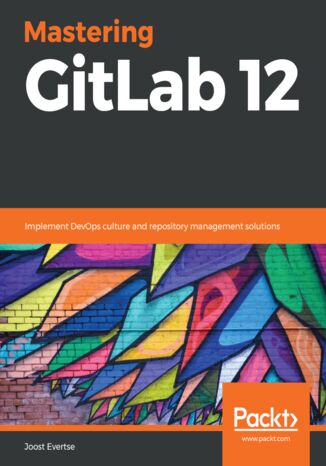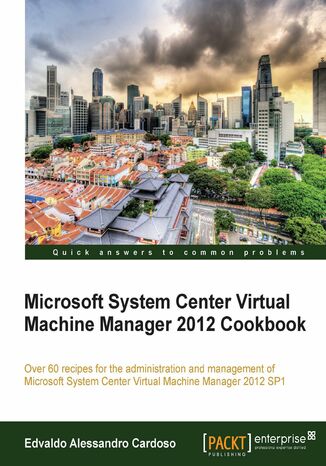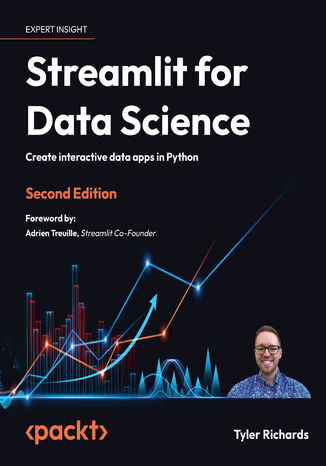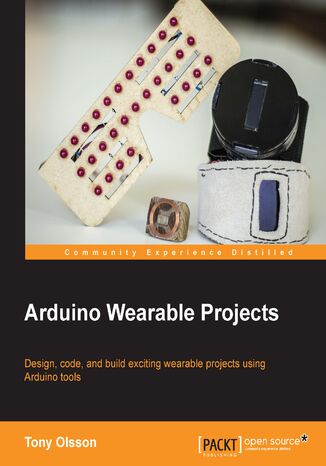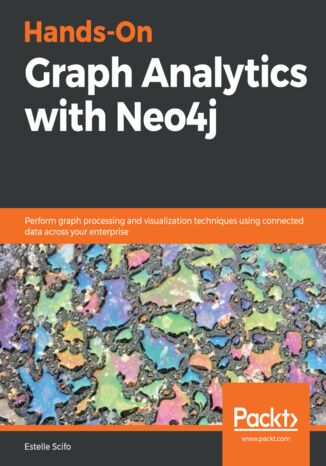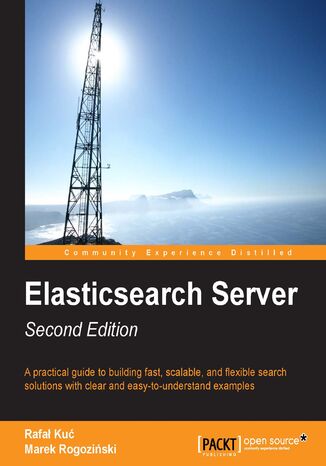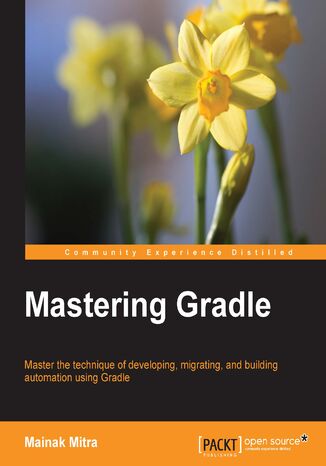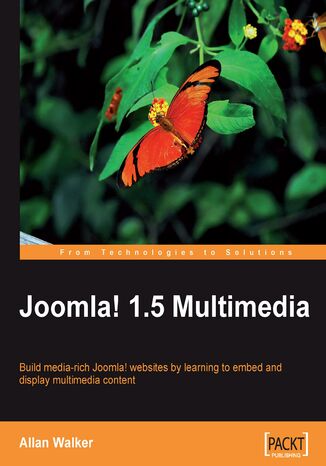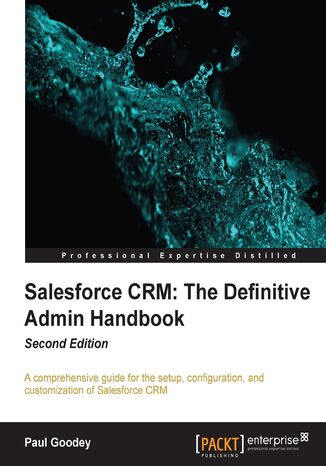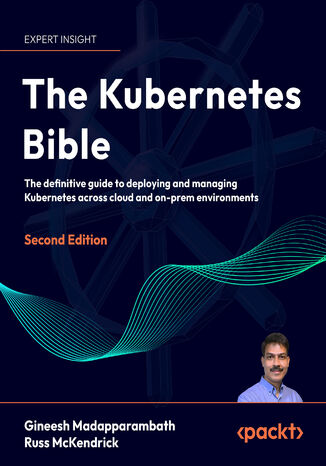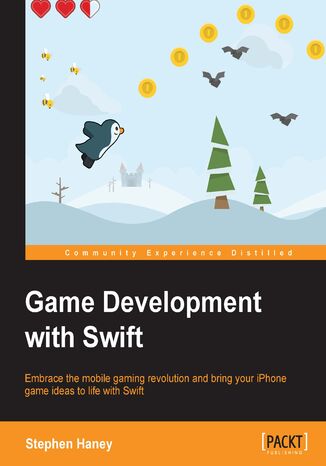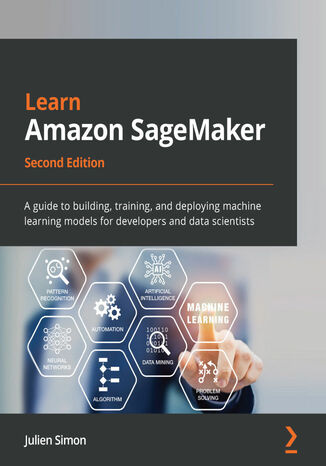Kategorien
-
- Bitcoin
- Geschäftsfrau
- Coaching
- Controlling
- E-Business
- Ökonomie
- Finanzen
- Börse und Investitionen
- Persönliche Kompetenzen
- Computer im Büro
- Kommunikation und Verhandlungen
- Kleines Unternehmen
- Marketing
- Motivation
- Multimedia-Training
- Immobilien
- Überzeugung und NLP
- Steuern
- Sozialpolitik
- Handbȕcher
- Präsentationen
- Führung
- Public Relation
- Berichte, Analysen
- Geheimnis
- Social Media
- Verkauf
- Start-up
- Ihre Karriere
- Management
- Projektmanagement
- Personal (HR)
-
- Architektura i wnętrza
- Sicherheit und Gesundheit am Arbeitsplatz
- Biznes i Ekonomia
- Haus und Garten
- E-Business
- Ekonomia i finanse
- Esoterik
- Finanzen
- Persönliche Finanzen
- Unternehmen
- Fotografie
- Informatik
- HR und Gehaltsabrechnung
- Frauen
- Computer, Excel
- Buchhaltung
- Kultur und Literatur
- Wissenschaftlich und akademisch
- Umweltschutz
- meinungsbildend
- Bildung
- Steuern
- Reisen
- Psychologie
- Religion
- Landwirtschaft
- Buch- und Pressemarkt
- Transport und Spedition
- Gesundheit und Schönheit
-
- Office-Programme
- Datenbank
- Bioinformatik
- IT Branche
- CAD/CAM
- Digital Lifestyle
- DTP
- Elektronik
- Digitale Fotografie
- Computergrafik
- Spiele
- Hacking
- Hardware
- IT w ekonomii
- Wissenschaftliche Pakete
- Schulbücher
- Computergrundlagen
- Programmierung
- Mobile-Programmierung
- Internet-Server
- Computernetzwerke
- Start-up
- Betriebssysteme
- Künstliche Inteligenz
- Technik für Kinder
- Webmaster
-
- Anthologien
- Ballade
- Biografien und Autobiografien
- Für Erwachsene
- Drama
- Tagebücher, Memoiren, Briefe
- Epos
- Essay
- Science Fiction
- Felietonys
- Fiktion
- Humor, Satire
- Andere
- Klassisch
- Krimi
- Sachbücher
- Belletristik
- Mity i legendy
- Nobelpreisträger
- Kurzgeschichten
- Gesellschaftlich
- Okultyzm i magia
- Erzählung
- Erinnerungen
- Reisen
- Gedicht
- Poesie
- Politik
- Populärwissenschaftlich
- Roman
- Historischer Roman
- Prosa
- Abenteuer
- Journalismus
- Reportage
- Romans i literatura obyczajowa
- Sensation
- Thriller, Horror
- Interviews und Erinnerungen
-
- Archäologie
- Bibliotekoznawstwo
- Filmwissenschaft
- Philologie
- Polnische Philologie
- Philosophie
- Finanse i bankowość
- Erdkunde
- Wirtschaft
- Handel. Weltwirtschaft
- Geschichte und Archäologie
- Kunst- und Architekturgeschichte
- Kulturwissenschaft
- Linguistik
- Literaturwissenschaft
- Logistik
- Mathematik
- Medizin
- Geisteswissenschaften
- Pädagogik
- Lehrmittel
- Populärwissenschaftlich
- Andere
- Psychologie
- Soziologie
- Theatrologie
- Teologie
- Theorien und Wirtschaftswissenschaften
- Transport i spedycja
- Sportunterricht
- Zarządzanie i marketing
-
- Sicherheit und Gesundheit am Arbeitsplatz
- Geschichte
- Verkehrsregeln. Führerschein
- Rechtswissenschaften
- Gesundheitswesen
- Allgemeines. Wissenskompendium
- akademische Bücher
- Andere
- Bau- und Wohnungsrecht
- Zivilrecht
- Finanzrecht
- Wirtschaftsrecht
- Wirtschafts- und Handelsrecht
- Strafrecht
- Strafrecht. Kriminelle Taten. Kriminologie
- Internationales Recht
- Internationales und ausländisches Recht
- Gesundheitsschutzgesetz
- Bildungsrecht
- Steuerrecht
- Arbeits- und Sozialversicherungsrecht
- Öffentliches, Verfassungs- und Verwaltungsrecht
- Familien- und Vormundschaftsrecht
- Agrarrecht
- Sozialrecht, Arbeitsrecht
- EU-Recht
- Industrie
- Agrar- und Umweltschutz
- Wörterbücher und Enzyklopädien
- Öffentliche Auftragsvergabe
- Management
-
- Afrika
- Alben
- Südamerika
- Mittel- und Nordamerika
- Australien, Neuseeland, Ozeanien
- Österreich
- Asien
- Balkan
- Naher Osten
- Bulgarien
- China
- Kroatien
- Tschechische Republik
- Dänemark
- Ägypten
- Estland
- Europa
- Frankreich
- Berge
- Griechenland
- Spanien
- Niederlande
- Island
- Litauen
- Lettland
- Mapy, Plany miast, Atlasy
- Miniführer
- Deutschland
- Norwegen
- Aktive Reisen
- Polen
- Portugal
- Andere
- Przewodniki po hotelach i restauracjach
- Russland
- Rumänien
- Slowakei
- Slowenien
- Schweiz
- Schweden
- Welt
- Türkei
- Ukraine
- Ungarn
- Großbritannien
- Italien
-
- Lebensphilosophien
- Kompetencje psychospołeczne
- zwischenmenschliche Kommunikation
- Mindfulness
- Allgemeines
- Überzeugung und NLP
- Akademische Psychologie
- Psychologie von Seele und Geist
- Arbeitspsychologie
- Relacje i związki
- Elternschafts- und Kinderpsychologie
- Problemlösung
- Intellektuelle Entwicklung
- Geheimnis
- Sexualität
- Verführung
- Aussehen ind Image
- Lebensphilosophien
-
- Bitcoin
- Geschäftsfrau
- Coaching
- Controlling
- E-Business
- Ökonomie
- Finanzen
- Börse und Investitionen
- Persönliche Kompetenzen
- Kommunikation und Verhandlungen
- Kleines Unternehmen
- Marketing
- Motivation
- Immobilien
- Überzeugung und NLP
- Steuern
- Sozialpolitik
- Handbȕcher
- Präsentationen
- Führung
- Public Relation
- Geheimnis
- Social Media
- Verkauf
- Start-up
- Ihre Karriere
- Management
- Projektmanagement
- Personal (HR)
-
- Anthologien
- Ballade
- Biografien und Autobiografien
- Für Erwachsene
- Drama
- Tagebücher, Memoiren, Briefe
- Epos
- Essay
- Science Fiction
- Felietonys
- Fiktion
- Humor, Satire
- Andere
- Klassisch
- Krimi
- Sachbücher
- Belletristik
- Mity i legendy
- Nobelpreisträger
- Kurzgeschichten
- Gesellschaftlich
- Okultyzm i magia
- Erzählung
- Erinnerungen
- Reisen
- Poesie
- Politik
- Populärwissenschaftlich
- Roman
- Historischer Roman
- Prosa
- Abenteuer
- Journalismus
- Reportage
- Romans i literatura obyczajowa
- Sensation
- Thriller, Horror
- Interviews und Erinnerungen
-
- Archäologie
- Philosophie
- Wirtschaft
- Handel. Weltwirtschaft
- Geschichte und Archäologie
- Kunst- und Architekturgeschichte
- Kulturwissenschaft
- Literaturwissenschaft
- Mathematik
- Medizin
- Geisteswissenschaften
- Pädagogik
- Lehrmittel
- Populärwissenschaftlich
- Andere
- Psychologie
- Soziologie
- Teologie
- Zarządzanie i marketing
-
- Lebensphilosophien
- zwischenmenschliche Kommunikation
- Mindfulness
- Allgemeines
- Überzeugung und NLP
- Akademische Psychologie
- Psychologie von Seele und Geist
- Arbeitspsychologie
- Relacje i związki
- Elternschafts- und Kinderpsychologie
- Problemlösung
- Intellektuelle Entwicklung
- Geheimnis
- Sexualität
- Verführung
- Aussehen ind Image
- Lebensphilosophien
Mastering GitLab 12. Implement DevOps culture and repository management solutions
GitLab is an open source repository management and version control toolkit with functions for enterprises and personal software projects. It offers configurability options, extensions, and APIs that make it an ideal tool for enterprises to manage the software development life cycle.This book begins by explaining GitLab options and the components of the GitLab architecture. You will learn how to install and set up GitLab on-premises and in the cloud, along with understanding how to migrate code bases from different systems, such as GitHub, Concurrent Versions System, Team Foundation Version Control, and Subversion. Later chapters will help you implement DevOps culture by introducing the workflow management tools in GitLab and continuous integration/continuous deployment (CI/CD). In addition to this, the book will guide you through installing GitLab on a range of cloud platforms, monitoring with Prometheus, and deploying an environment with GitLab. You'll also focus on the GitLab CI component to assist you with creating development pipelines and jobs, along with helping you set up GitLab runners for your own project. Finally, you will be able to choose a high availability setup that fits your needs and helps you monitor and act on results obtained after testing.By the end of this book, you will have gained the expertise you need to use GitLab features effectively, and be able to integrate all phases in the development process.
Microsoft System Center 2012 is a comprehensive IT infrastructure, virtualization, and cloud management platform. With System Center 2012, you can more easily and efficiently manage your applications and services across multiple hypervisors as well as across public and private cloud infrastructures to deliver flexible and cost-effective IT services for your business.This cookbook covers architecture design and planning and is full of deployment tips, techniques, and solutions designed to show users how to improve VMM 2012 in a real world scenario. It will guide you to create, deploy, and manage your own Private Cloud with a mix of Hypervisors: Hyper-V, Vmware ESXi, and Citrix XenServer. It also includes the VMM 2012 SP1 features.This book is a cookbook that covers architecture design, planning and is full of deployment tips, techniques and solutions designed to show users how to improve VMM 2012 in a real world scenario. It will guide you to create, deploy and manage your own Private Cloud with a mix of Hypervisors : Hyper-V, Vmware ESXi and Citrix XenServer.
Streamlit for Data Science. Create interactive data apps in Python - Second Edition
Tyler Richards, Adrien Treuille
If you work with data in Python and are looking to create data apps that showcase ML models and make beautiful interactive visualizations, then this is the ideal book for you. Streamlit for Data Science, Second Edition, shows you how to create and deploy data apps quickly, all within Python. This helps you create prototypes in hours instead of days!Written by a prolific Streamlit user and senior data scientist at Snowflake, this fully updated second edition builds on the practical nature of the previous edition with exciting updates, including connecting Streamlit to data warehouses like Snowflake, integrating Hugging Face and OpenAI models into your apps, and connecting and building apps on top of Streamlit databases. Plus, there is a totally updated code repository on GitHub to help you practice your newfound skills.You'll start your journey with the fundamentals of Streamlit and gradually build on this foundation by working with machine learning models and producing high-quality interactive apps. The practical examples of both personal data projects and work-related data-focused web applications will help you get to grips with more challenging topics such as Streamlit Components, beautifying your apps, and quick deployment.By the end of this book, you'll be able to create dynamic web apps in Streamlit quickly and effortlessly.
Mermaid is a JavaScript-based charting and diagramming tool that lets you represent diagrams using text and code, which simplifies the maintenance of complex diagrams. This is a great option for developers as they’re more familiar with code, rather than using special tools for generating diagrams. Besides, diagrams in code simplify maintenance and ensure that the code is supported by version control systems. In some cases, Mermaid makes refactoring support for name changes possible while also enabling team collaboration for review distribution and updates.Developers working with any system will be able to put their knowledge to work with this practical guide to using Mermaid for documentation. The book is also a great reference for looking up the syntax for specific diagrams when authoring diagrams.You’ll start by learning the importance of accurate and visual documentation. Next, the book introduces Mermaid and establishes how to use it to create effective documentation. By using different tools, editors, or a custom documentation platform, you’ll also understand how to use Mermaid syntax for various diagrams. Later chapters cover advanced configuration settings and theme options to manipulate your diagram as per your needs.By the end of this book, you’ll be well-versed with Mermaid diagrams and how they can be used in your workflows.
Neo4j is a graph database that includes plugins to run complex graph algorithms.The book starts with an introduction to the basics of graph analytics, the Cypher query language, and graph architecture components, and helps you to understand why enterprises have started to adopt graph analytics within their organizations. You’ll find out how to implement Neo4j algorithms and techniques and explore various graph analytics methods to reveal complex relationships in your data. You’ll be able to implement graph analytics catering to different domains such as fraud detection, graph-based search, recommendation systems, social networking, and data management. You’ll also learn how to store data in graph databases and extract valuable insights from it. As you become well-versed with the techniques, you’ll discover graph machine learning in order to address simple to complex challenges using Neo4j. You will also understand how to use graph data in a machine learning model in order to make predictions based on your data. Finally, you’ll get to grips with structuring a web application for production using Neo4j.By the end of this book, you’ll not only be able to harness the power of graphs to handle a broad range of problem areas, but you’ll also have learned how to use Neo4j efficiently to identify complex relationships in your data.
Joomla! is a content management system designed to organize and deliver content within a web site environment. Multimedia provides us with stunning interactive user experiences and wonderful design options, but it requires discipline and knowledge to utilize it effectively so that we do not alienate our audiences. If you want to display more than just text on your Joomla! pages, this book has been designed for you and is a must-read. It takes you beyond the basics of Joomla! and helps to take full advantage this powerful CMS structure to deliver media-rich web content to your site users.This book provides detailed information and all the required know-how for Joomla! administrators to create engaging media-rich Joomla! web sites. Utilizing core Joomla! features and the power of Joomla! Extensions, this step-by-step guide will show you how to include popular media elements into your web site and collaborate with external web resources.You will learn everything you need to know to present text, images, video, and audio in your content both by manually embedding content and using more automated methods. You will learn to create regular podcasts and utilize RSS to help publicize and deliver your site content.Learn about the popular Multimedia Extensions for Joomla! Learn how they benefit your CMS with additional features and how they are installed and configured. Utilize the abundance of external resources now available on the Web. Learn how your Joomla! site can interact and present web content from external resources such as YouTube, Flickr, Twitter, and Google.This book teaches all you need to know to take your standard Joomla! CMS and turn it into a feature packed and media-rich web site. It highlights the benefits of Multimedia features and warns of the accessibility issues that can arise when they are misused. Follow step-by-step tutorials for implementing popular media elements into your site and learn about the accessibility of these resources and how to utilize them effectively with accessibility in mind.
Thanks to its reliability, robustness, and high performance, PostgreSQL has become one of the most advanced open source databases on the market. This updated fourth edition will help you understand PostgreSQL administration and how to build dynamic database solutions for enterprise apps with the latest release of PostgreSQL, including designing both physical and technical aspects of the system architecture with ease.Starting with an introduction to the new features in PostgreSQL 13, this book will guide you in building efficient and fault-tolerant PostgreSQL apps. You’ll explore advanced PostgreSQL features, such as logical replication, database clusters, performance tuning, advanced indexing, monitoring, and user management, to manage and maintain your database. You’ll then work with the PostgreSQL optimizer, configure PostgreSQL for high speed, and move from Oracle to PostgreSQL. The book also covers transactions, locking, and indexes, and shows you how to improve performance with query optimization. You’ll also focus on how to manage network security and work with backups and replication while exploring useful PostgreSQL extensions that optimize the performance of large databases.By the end of this PostgreSQL book, you’ll be able to get the most out of your database by executing advanced administrative tasks.
Salesforce CRM: The Definitive Admin Handbook is the complete guide to implementing Salesforce CRM. Whether you are looking to enhance the core features or you have already started customizing your Salesforce CRM system and are looking for guidance on advanced features. This book will show you how to get maximum benefit from this exciting product.Salesforce CRM is a market-leading customer relationship management (CRM) application that is accessed over the Internet. The CRM application provides facilities to manage sales projections and orders, marketing plans, business process automation and collaboration, service and support, and data analytics. The application greatly enhances a company's sales performance, improves team work and collaboration, and provides a robust customer relationship management strategy for an organization.Salesforce CRM: The Definitive Admin Handbook has been updated for the Spring '13 release and gives you all the information you need to administer this powerful CRM application.The book begins with the setup of users and security settings and then progresses to configuration, data management, and data analytics. Finally, the book covers the ways in which the core platform can be further extended and enhanced.Focused on the needs of the enterprise, this book provides a solution-driven approach for both business and IT specialists to get the most from the Salesforce CRM application. It begins with setting up of organization-wide features that affect the look-and-feel of the application. We will then move on to data management, analytics, process automation and approval mechanisms are then covered, along with the functional areas of Sales Cloud, Service Cloud, Marketing Cloud, and Salesforce Chatter. Finally, we will look into the methods used to further enhance the system and to improve the return on investment from the application.After reading Salesforce CRM: The Definitive Admin Handbook, you will feel comfortable with the administration features within Salesforce CRM and will have been presented with real-world scenarios to improve the setup and avoid some common pitfalls.
Gineesh Madapparambath, Russ McKendrick, Ed Price
Kubernetes has become the go-to orchestration platform for containerized applications. As a Kubernetes user, you know firsthand how powerful yet complex this tool can be. The Kubernetes Bible cuts through the complexity, offering hands-on examples and expert advice to conquer containerization challengesWith this new edition, you will master cutting edge security practices, deploy seamlessly and scale effortlessly, ensuring unwavering service availability. You will gain the expertise to craft production-grade applications, secure development environments, navigate complex deployments with ease, and become a security maestro. You will be able to optimize network communication and data management across major cloud platforms. Additionally, this book dives deep into these challenges, offering solutions such as multi-container Pods, advanced security techniques, and expert networking guidance. You will also explore persistent storage advancements, cloud-specific cluster management updates, and best practices for traffic routingBy the end of this comprehensive guide, you will possess the skills and knowledge to orchestrate your containerized applications with precision, ensuring their optimal performance and scalability. Stop settling for basic container management. Order your copy today and orchestrate your containers to greatness.
Amazon SageMaker enables you to quickly build, train, and deploy machine learning models at scale without managing any infrastructure. It helps you focus on the machine learning problem at hand and deploy high-quality models by eliminating the heavy lifting typically involved in each step of the ML process. This second edition will help data scientists and ML developers to explore new features such as SageMaker Data Wrangler, Pipelines, Clarify, Feature Store, and much more.You'll start by learning how to use various capabilities of SageMaker as a single toolset to solve ML challenges and progress to cover features such as AutoML, built-in algorithms and frameworks, and writing your own code and algorithms to build ML models. The book will then show you how to integrate Amazon SageMaker with popular deep learning libraries, such as TensorFlow and PyTorch, to extend the capabilities of existing models. You'll also see how automating your workflows can help you get to production faster with minimum effort and at a lower cost. Finally, you'll explore SageMaker Debugger and SageMaker Model Monitor to detect quality issues in training and production.By the end of this Amazon book, you'll be able to use Amazon SageMaker on the full spectrum of ML workflows, from experimentation, training, and monitoring to scaling, deployment, and automation.
Embedded Systems Architecture begins with a bird’s-eye view of embedded development and how it differs from the other systems that you may be familiar with. This book will help you get the hang of the internal working of various components in real-world systems.You’ll start by setting up a development environment and then move on to the core system architectural concepts, exploring system designs, boot-up mechanisms, and memory management. As you progress through the topics, you’ll explore the programming interface and device drivers to establish communication via TCP/IP and take measures to increase the security of IoT solutions. Finally, you’ll be introduced to multithreaded operating systems through the development of a scheduler and the use of hardware-assisted trusted execution mechanisms.With the help of this book, you will gain the confidence to work with embedded systems at an architectural level and become familiar with various aspects of embedded software development on microcontrollers—such as memory management, multithreading, and RTOS—an approach oriented to memory isolation.

